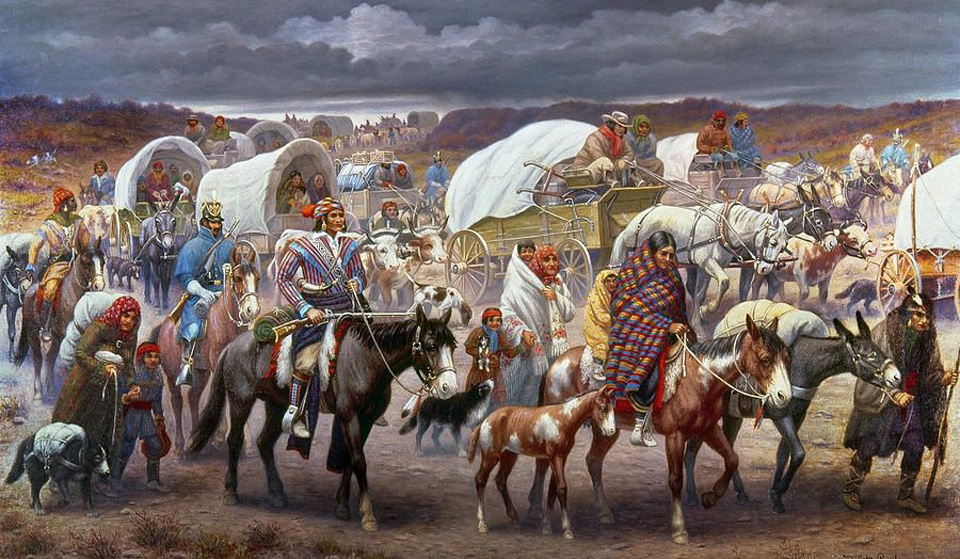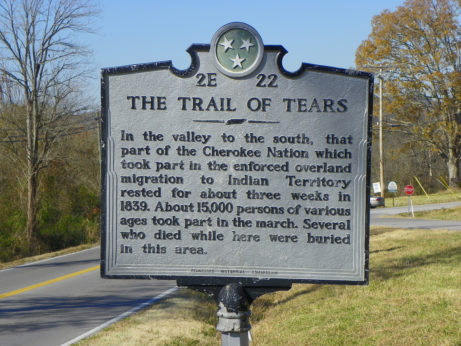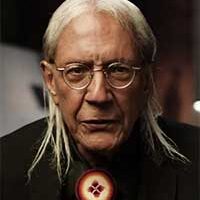
The “Trail of Tears Walk” held in Mt. Juliet and Woodbury, Tennessee on September 16 and 17 memorialized the tragic and brutal removal of the five Indigenous nations—Cherokee, Muscogee Creek, Choctaw, Chickasaw, and Seminole—from their homelands in the 1830s to present-day Oklahoma. The Northern Route of the Trail of Tears passed through these two Middle Tennessee towns located just south of Nashville. Thousands of Cherokees and hundreds of Creeks and African Americans traveled together on their way to unknown homes in the west.
The “Trail of Tears Walk” was organized by Muscogee Creek Tribe member Melba Checote-Eads and has been held for the past 15 years.

This writer attended this year’s commemoration and was profoundly moved by the memories evoked by the tragic events of the genocidal removal. The history of that time is a shameful and indelible scar on the body politic of this country.
The great Native nations of the South were driven west after the passage of the Indian Removal Act of 1830, which was engineered by the infamous Indian-hater, President Andrew Jackson. The term “Trail of Tears” was coined from the story passed down through some Indian families that this was the “Trail Where We Cried.” But there is also another side to this origins story. It holds that it was not the Indian people who were crying, but rather it was the white people who saw the sorrowful, suffering cavalcades passing through their towns who were moved to tears.
Each of the five tribes who were removed by U.S. military forces sustained heavy loss of life. For the Cherokees, it is said that no elder over 60 and no child under 6 survived, so harsh were the conditions and the brutality of the forced death marches.
Each nation had their own horror stories of the Trail. The Creeks died by the hundreds when one of the steamboats carrying the hapless blew up because of a boiler explosion. There is a Cherokee account of white townspeople throwing sticks of dynamite into a frozen river so that the wagons filled with women, children, the old, and the infirm crossing would sink and their occupants drown beneath the ice. In all, it is estimated that over 60,000 Native people were driven from their homes and the lands they had occupied for thousands of years. It was ethnic cleansing at its worst.
For those that survived the harrowing journey, they experienced significant cultural loss with the demise of the elders who were the bearers of tradition. An entire generation of children was lost, impacting the future survival of the nations themselves. Sacred sites in the South were lost and many pillaged by the white settlers who followed on the heels of the exiles driven from their homes. The graves of the ancestors were left behind and often looted, again, by rapacious white immigrants. Ancient tribal town sites became painful memories. Plants and herbs used in medicines and the ceremonial life of the people became reminiscences of anxiety.
Millions of acres of rich farmland, which had been cultivated by Native people since time immemorial, became the basis for the plantation system and the horrific enslavement of millions of Africans—the legacy of which exists to this very day. Indeed, much of the impetus for the Trail of Tears and the Seminole Wars of the same era was the advocacy of exploitative enrichment by the burgeoning Southern planter aristocracy.
Attending the commemoration were tribal members of the Muscogee Creek Nation, the Cherokee Nation of Oklahoma, the Choctaw Nation of Oklahoma, Chief Cecil Hunt of the Tuscarora Tribe of North Carolina, Muscogee Creek Nation Representative Geebon Gouge, and Mayor Duggin of Woodbury. A wreath was laid at the Woodbury Courthouse in memory of all those who walked the Trail of Tears in 1838.
The memorial Walk was to honor those, from all the Southern tribes, who walked and all those who died along the many Trails of Tears that coursed through the South.










